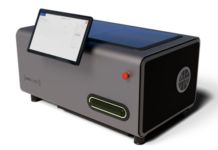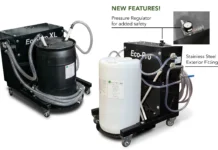Press release submitted on behalf of DELMIAWorks and Kinetic.PR, LLC.
2024 Technology Trends
“In 2024, we’ll see a continued move toward greater adoption of smart manufacturing across companies of all sizes. Advances in artificial intelligence are enabling new levels of automation and data-driven decision-making. At the same time, the ready availability of cloud-based manufacturing solutions, with their scalability and compute power, are helping to level the playing field for small to medium plastics processors.”
“While manufacturing automation/tools/robots are inherently on-premises systems, we’ll see these systems connect to cloud-based solutions that offer new types of augmented automation or intelligence.”
“Plastics processors will increasingly use artificial intelligence to supplement the knowledge workers in their organizations. This is being driven by two factors. One is the graying workforce where plastics manufacturers need to capture the insights of their in-house experts before they retire. Early projects among large manufacturers are not only capturing what an expert has done in the past; they’re also using AI to replicate what that expert would have done in a new situation based on their previous approach to the job. The other factor is the continuing industry consolidation where plastics processors going through mergers and acquisitions end up losing some experts while building more complex businesses. Many times, the person in charge of scheduling or forecasting doesn’t really understand how that process was handled by the acquired company. This is leading more plastics manufacturers to rely on intelligence-driven forecasting and scheduling software to automate processes and apply consistent best practices across the organization.”
“More plastics manufacturers will rely on artificial intelligence to get even greater value out of the machine vision systems they’ve been running for years. Now it’s possible to upload pictures of what good and bad parts look like to an AI engine in the cloud to train the machine vision system. Then, live camera feeds from the system to Cloud can automate the process of identifying bad parts instead of relying on manual inspectors. This introduces a level of efficiency while reducing costs and minimizing the risk of manual errors.”
“One of the persistent challenges for plastics processors with global markets and supply chains is the natural language barrier. Even if all parties agree to communicate in a common language, most often English, minor translation errors can lead to misunderstandings. In 2024, we will see web conference services start to provide AI-driven, automated translations of conversations in near real time.”
“The rapid, AI-driven learning of robots is making robots as a service a practical business model. The way a robot learns is being advanced all the time by just putting it through the motions and giving it recovery routines. However, the previous pace of learning meant it wasn’t practical to use a robot unless a plastics manufacturer was using it to do the same thing for a year or more. Now, with the rapid pace of learning, a robot can be trained to do half a dozen different jobs in just a few days. And since the software running the robot is in the cloud, the person programming it doesn’t need to physically be there; they can be anywhere in the world. This makes robotics as a service a viable alternative to purchases or long-term leases.”
2024 Business Trends
“Not all manufacturing developments are being driven by technology. Market factors are also shaping a number of trends we’ll see in 2024.”
“Sustainability will become a part of day-to-day manufacturing in the plastics industry. Some sectors, particularly packaging producers, are starting to make fundamental changes to their products by embracing compostable materials. However, the greater awareness of environmental impact by consumers and businesses, alike, will lead more manufacturers overall to reconsider the impact of their production processes, handling of scrap, and energy use. Additionally, as many large, global businesses establish goals to become carbon-neutral, they are placing demands on plastics processors to report their carbon emissions. The good news is that an enterprise resource planning system with functionality for managing a bill of manufacture, or BOM, can be used to automate the calculation and reporting of these emissions.”
“The rise of interest rates is changing the nature of mergers and acquisitions. Economic buyers’ activity is down while strategic buyers are continuing to execute. Perhaps the biggest strategic trend is the move to vertical integration where companies are buying and integrating manufacturers with different areas of expertise, from plastics processing to metal fabrication, assembly, and packaging to name just a few. These vertically integrated companies are then offering one-stop-manufacturing or manufacturing as a service.”
“Another factor that will drive vertical integration through mergers and acquisitions is customers’ increasing desire to replace their open-loop supply chain with a more closed-loop supply chain—buying more from fewer vendors.”
“In a similar vein, customers are demanding to know the genealogy of parts, where they came from and how they were made. Even customers not working with consolidated supply chains are seeking to closely monitor their supply chains by requiring suppliers and contract manufacturers to document the parts and products they are delivering.”
“More plastics processors will move to near lights-out production shifts, supported by the use of robots. Running a full lights-out operation can require a significant upfront investment and is best-suited for large production runs of the same products or components. But even small batch operations can gain the benefits of near-lights-out operations where flexible robots handle increasing percentages of the pick and place operations.”
For more information, visit www.3ds.com/products-services/delmiaworks/.





